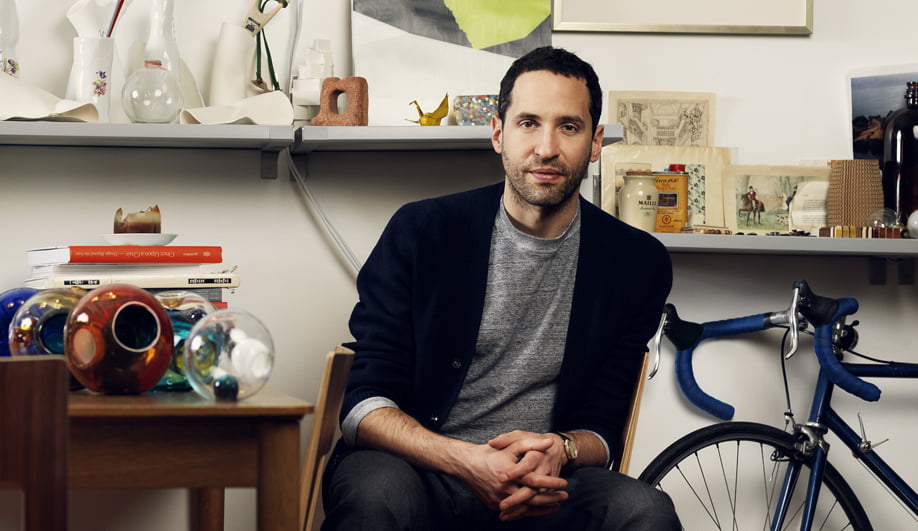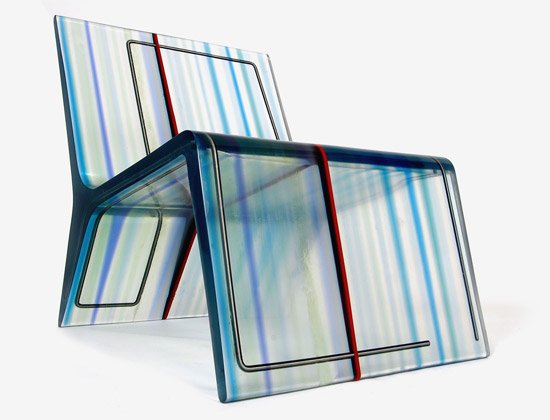The aphorism, ‘a jack of all trades’ may be an understatement to describe Israeli architect, designer, sculptor and materials engineer Omer Arbel. The creative director of Bocci, a well-known contemporary design and manufacturing company in Vancouver and Berlin, Arbel has spent years perfecting the art of understanding materials while blurring the lines between architecture, design and engineering.
“I take as a point of departure a material’s intrinsic mechanical, chemical or physical properties,” Arbel says of his work. His artistic drive to create new, unique and mostly spontaneous forms is evident by just looking at Arbel’s diverse body of work, like the newest addition to the Canada House in London, UK, entitled ‘57’, or the ’23.2 House’ he designed in Vancouver, Canada that was shortlisted for the World Architecture Awards in 2010.
Whatever Arbel does, he does it with the offhand mastery of an artistic genius.
Changing forms
Arbel originally hails from Jerusalem, Israel, moving to Vancouver at the age of 13 with his parents. He was a competitive fencer, even making the Canadian Junior National team, and a student of environmental science at the University of Waterloo before he made his foray into the world of design. Working under the Catalan architect Enric Miralles, Arbel was exposed to the world of architecture and went on to pursue a degree in the field back in Canada.
SEE ALSO: Delicate ‘Studio Ve’ Clocks Show It’s Time For A Change In Perspective
Once he had enough experience under his belt, Arbel began to experiment with different artistic forms in his installations, namely innovative industrial design, sculpture and, of course, lighting. According to Arbel, the entire concept behind his work was “invented” while working on a famous lighting series called ‘14’ in 2005.
The idea of maximizing both space and form has become the central pillar of Arbel’s now popular design firm Bocci, based in Vancouver, where he helps shape the company’s portfolio. Each of the projects is numbered in succession, according to the date of initiation.
Sign up for our free weekly newsletter
SubscribeOne of his earliest projects, the ‘2.4 Chair’, is also one of this most inspiring. Compiled of 50 layers of colorful polyester resin, each step had to be meticulously timed. Arbel could not take breaks between each layer, leading to 175 hours of non-stop creation.
Light that speaks volumes
When asked about what appears to be his true passion, lighting, as opposed to any of the other fields he shines in, Arbel has an intriguing answer, “One of my eyes is almost blind and the other sees better than more humans, almost to the point of X-Ray vision. This combination makes my perception of light and color very different than that of most people.”
SEE ALSO: Israeli Designer Wins International Award For Stunning 3D Printed Fashion
Arbel’s eye for detail won him the Royal Architectural Institute of Canada’s Allied Arts Medal in 2015, as well as the chance to design the set of ‘RITE’, a modern-day ballet adaptation of Igor Stravnsky’s “The Rite of Spring”. In addition, Arbel was selected, together with Aboriginal artist Corrine Hunt to design the 2010 Olympic medals, and he received a Red Dot Award for his project ‘22’.
Striving to create different forms in all of his work, Arbel insists that it’s all part of a much wider picture, “It is all one big project, the objects, the buildings, the installations.”
Photos: Bocci/ GlobalTVBC
Related posts

Rehabilitation Nation: Israeli Innovation On Road To Healing

Israeli High-Tech Sector 'Still Good' Despite Year Of War









Facebook comments